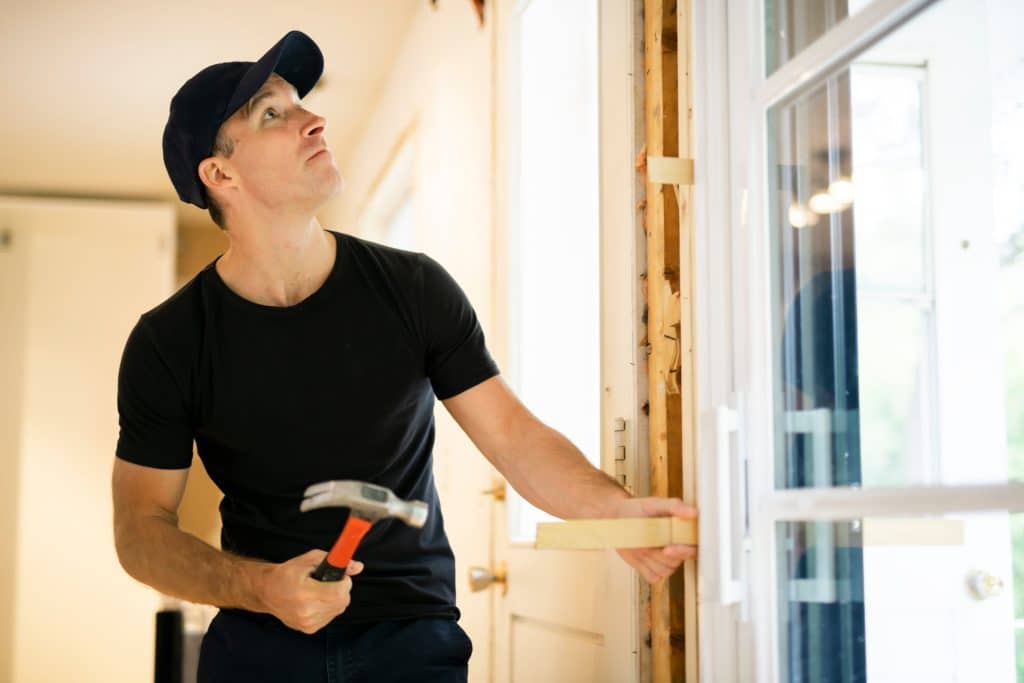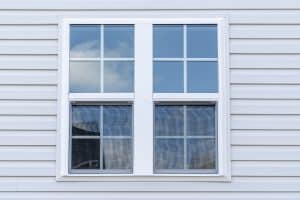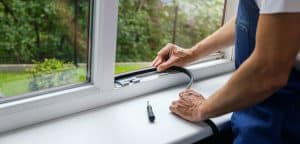In North Texas, high winds and sudden temperature shifts are part of everyday life, especially during winter cold fronts or spring storms. Patio doors, while beautiful and functional, can often become the weak link in your home’s insulation system. Whether you have sliding glass doors or elegant French doors, even small gaps can let in cold air, dust, and noise while driving up energy bills.
The good news is you may not need full replacement to improve comfort and performance. With the right weatherstripping and threshold upgrades, you can dramatically cut air infiltration and keep your DFW home cozy year-round.
Why Patio Doors Leak Air
Patio doors are often subjected to more frequent use than typical windows, making them more prone to wear than windows. Over time, the seals, rollers, and tracks collect debris or lose alignment. As a result, small spaces open along the edges and bottom of the door. Common culprits include:
- Worn or brittle weatherstripping along the door frame
- Misaligned or damaged rollers on sliding doors
- Warped door panels or frames that prevent full closure
- Old thresholds without a proper compression seal
Even gaps smaller than 1/8 inch can allow wind and drafts to rush through. During DFW’s gusty days, that adds up to significant heat loss and discomfort.
How Modern Patio Doors Improve Weather Sealing
Today’s sliding and hinged patio doors use integrated weatherstripping systems designed to reduce drafts, block moisture, and limit air infiltration. The exact components differ by style, but most quality replacement doors include several of the following built-in technologies:
Sliding Patio Doors
- Fin seals: Flexible nylon or plastic fins installed along the meeting rails and perimeter help reduce air movement where the operable panel overlaps the frame.
- Pile weatherstripping: Dense, brush-like strips tucked into the frame and sash track help block dust, wind, and minor drafts while maintaining smooth operation.
- Interlocking panels: Many modern sliders use an interlock system where the two panels meet, creating a more secure, wind-resistant seal when the door is closed.
- Compression gaskets (on higher-end models): Some premium sliders add bulb- or tubular-style gaskets at key contact points to improve air tightness under wind pressure.
French and Hinged Patio Doors
- Compression seals: Rubber gaskets around the perimeter compress tightly when the door closes, forming a continuous barrier against outside air.
- Multi-point locking systems: Locks that secure the door at several points along the frame pull the slab more evenly into the compression seals for a tighter, more uniform seal.
- V-strip seals: Flexible plastic or metal strips along the jamb and head expand slightly when the door closes, helping seal small gaps without affecting movement.
- Sill and sweep systems: Modern threshold designs combine raised sills with adjustable door sweeps to reduce drafts at the bottom, which is a common weak point on older French doors.
Upgrade Your Door Sweep
If you feel cold air sneaking in at the bottom of your patio doors, the door sweep or bottom gasket may be worn or missing. A door sweep attaches to the bottom edge of the active door panel and blocks airflow between the door and the threshold.
Types of sweeps include:
- Brush sweeps: Good for sliding doors, they prevent air and debris from entering the bottom track.
- Vinyl or rubber bulb sweeps: Common on French doors, these create a flexible seal that compresses against the threshold.
- Automatic drop-down sweeps: These retract slightly when the door opens and lower into place when it closes, creating a tight seal without dragging on floors.
Install or Adjust the Threshold
The threshold, or the metal or composite strip along the bottom of your patio door, plays a major role in sealing against wind. An old or misaligned threshold can leave visible gaps, especially on uneven floors.
Adjustable thresholds have built-in screws that let you raise or lower the top cap to fine-tune contact with the bottom sweep. When adjusted correctly, you’ll feel resistance as the door latches but no drag when opening or closing.
For sliding doors, cleaning and lubricating the bottom track can also help restore smooth operation and tighter closure.
Check Alignment and Hardware
Even the best seals won’t help if the doors are out of alignment. Check that both panels close evenly and that the latch engages smoothly. For sliding doors, worn rollers can prevent full closure, leaving a visible gap at the top or bottom.
Upgrade to a Better-Sealing Patio Door for Your Dallas–Fort Worth Home
If your current patio door is drafty, difficult to close or showing signs of worn weatherstripping, it may be time for a replacement. Window Zone installs modern sliding and French patio doors engineered with advanced sealing systems that block wind, limit air leakage, and improve year-round comfort.
Call Window Zone at 469.557.6333 to schedule your free replacement quote and learn how a new patio door can create a quieter, more efficient, and more comfortable living space.




